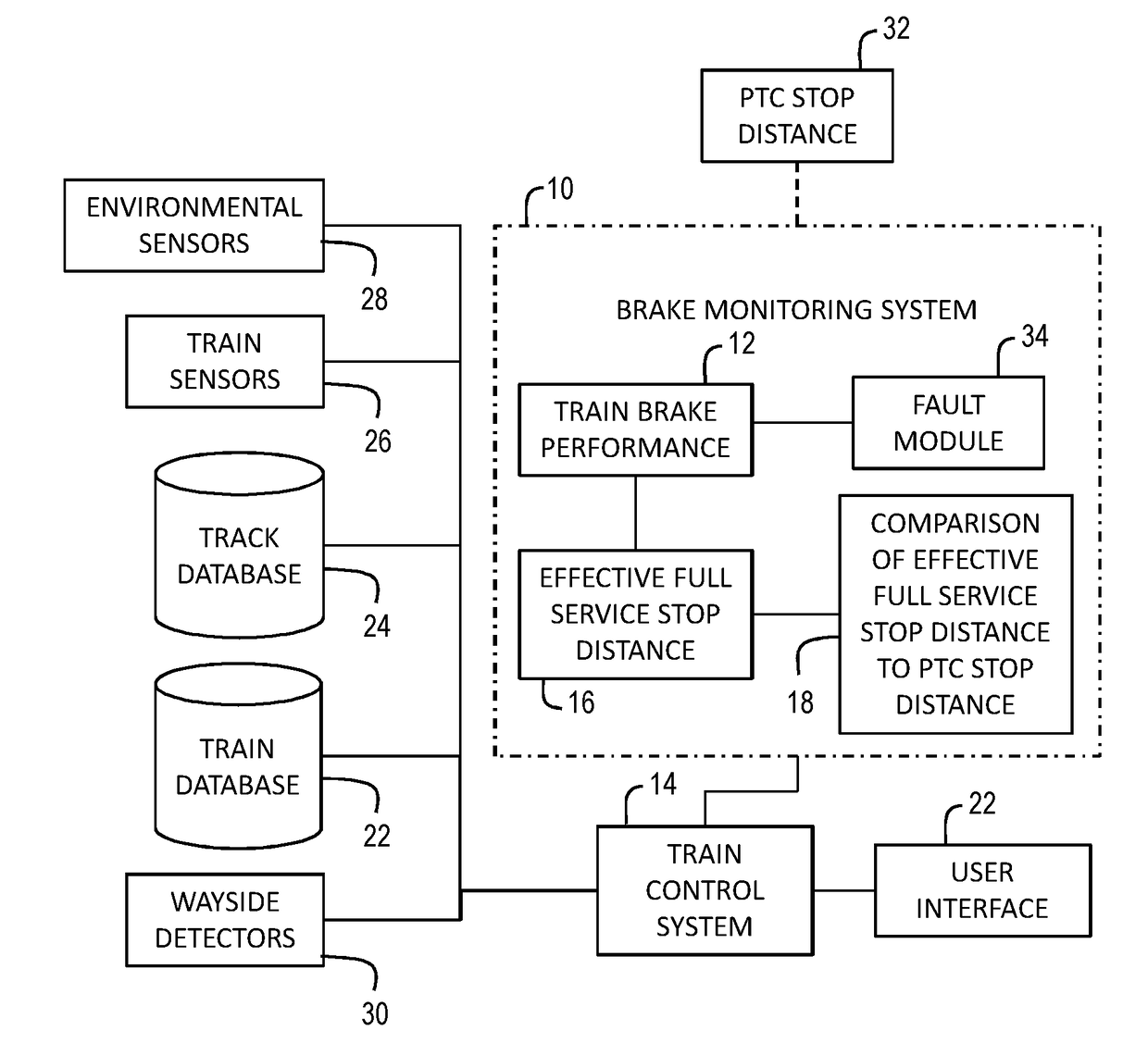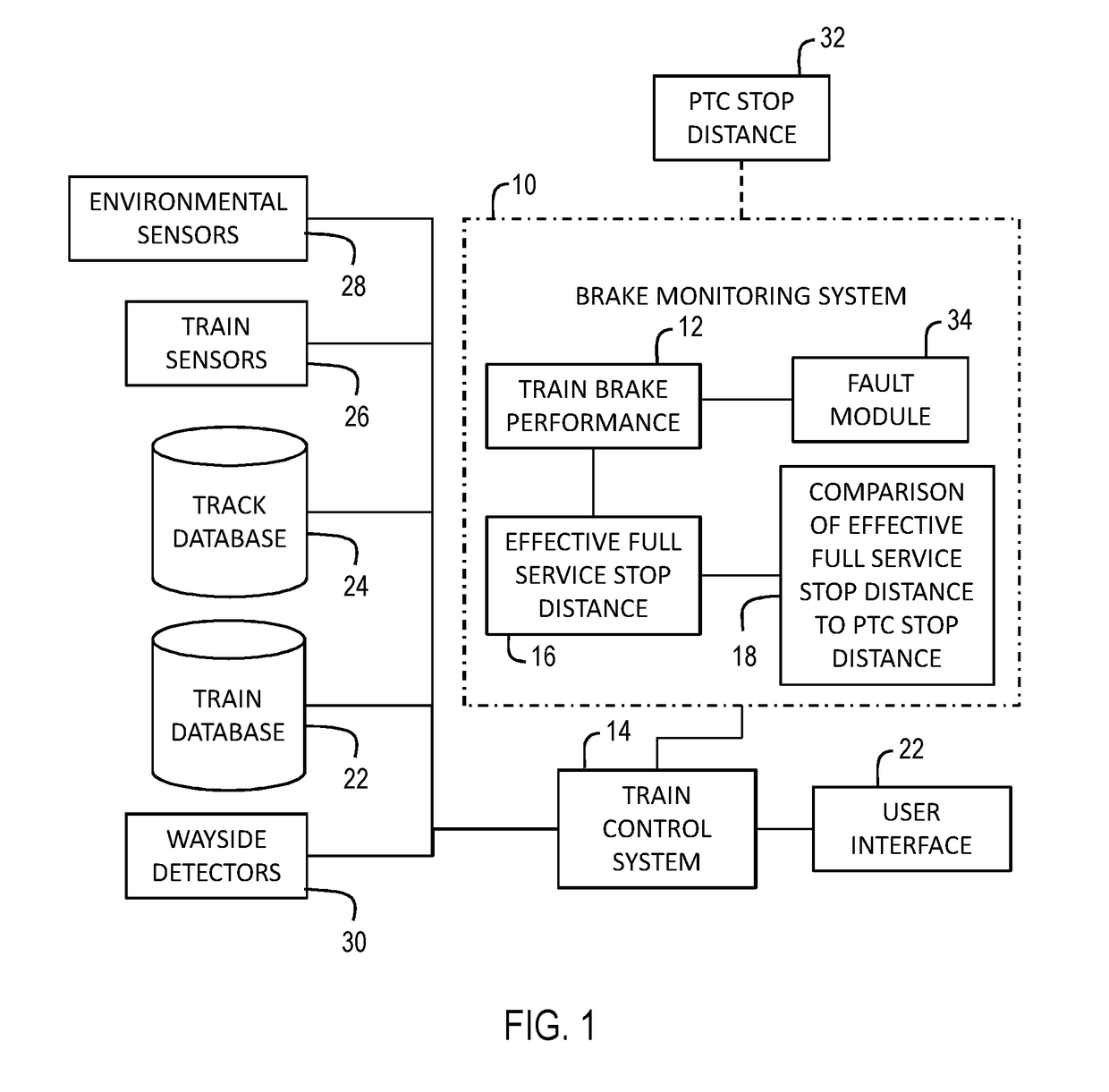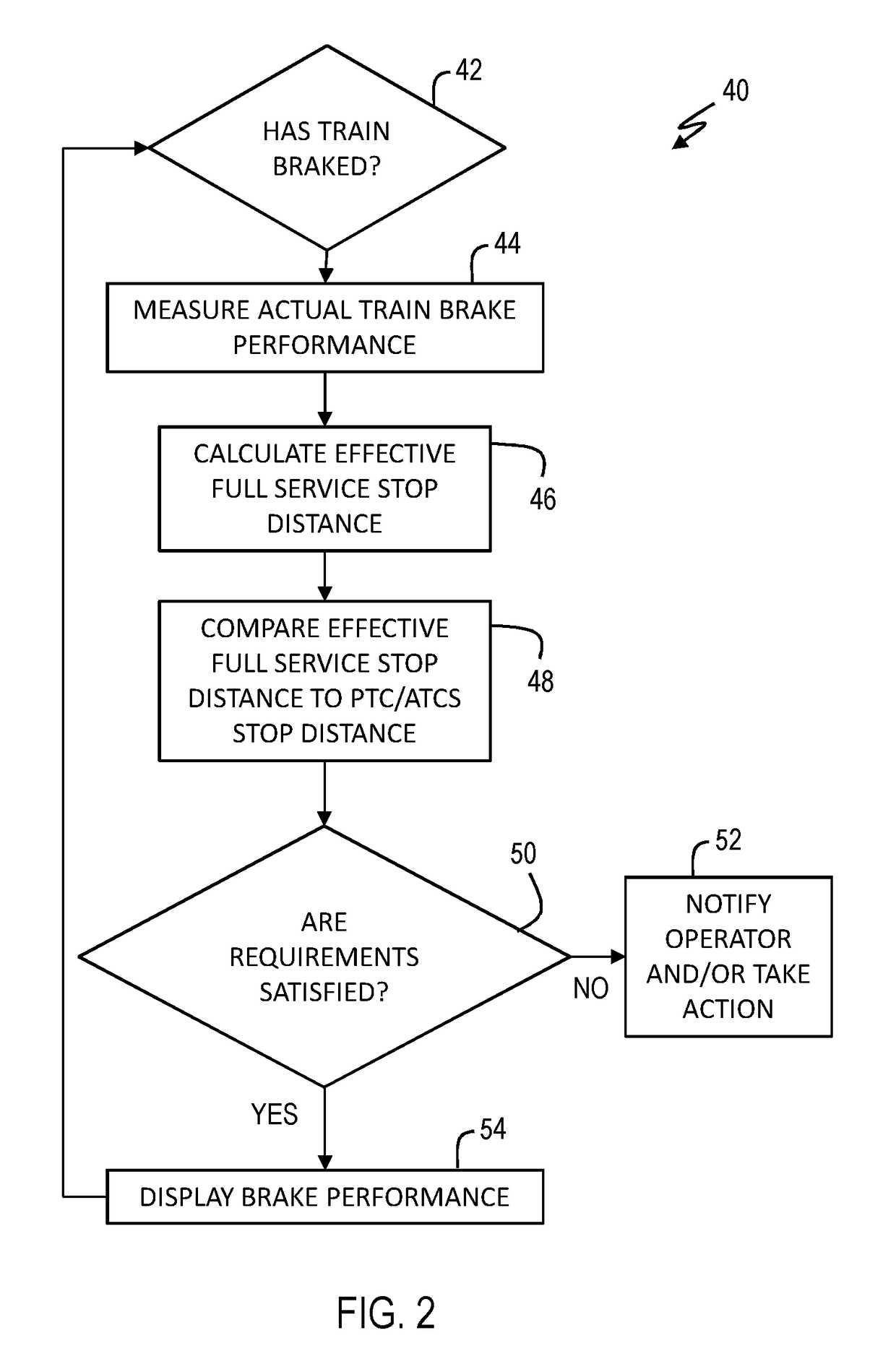Train brake safety monitoring and fault action system with PTC brake performance assurance
a technology of brake performance assurance and safety monitoring, which is applied in the direction of brake systems, brake components, transportation and packaging, etc., can solve the problems of aar freight trains without a brake monitoring system on board, failure of actual braking power of trains to exceed certain thresholds, and the need for the train to be taken out of service. , to achieve the effect of positive brake capacity, longer stop, and improved brake efficiency
- Summary
- Abstract
- Description
- Claims
- Application Information
AI Technical Summary
Benefits of technology
Problems solved by technology
Method used
Image
Examples
Embodiment Construction
[0012]Referring now to the drawings, wherein like reference numerals refer to like parts throughout, there is seen in FIG. 1 an intelligent, on-board, train brake safety monitoring and fault action system 10. Brake monitoring system 10 comprises a train brake performance module 12 that dynamically determines the effective stopping distance for the train based on actual brake performance and then compares the effective stopping distance to any train brake performance requirements or PTC / ACTS system requirements. Brake monitoring system 10 is preferably adapted to interface with an on-board train control system 14, such as the LEADER® system available from New York Air Brake of Watertown, N.Y., which includes a train manifest, train dynamic modeling algorithms, GPS correlation to locally stored track profiles, train speed, train acceleration, measured brake pipe pressure, flow and gradient and driver brake commands. Brake monitoring system 10 may be provided as a stand-alone unit or b...
PUM
 Login to View More
Login to View More Abstract
Description
Claims
Application Information
 Login to View More
Login to View More - R&D
- Intellectual Property
- Life Sciences
- Materials
- Tech Scout
- Unparalleled Data Quality
- Higher Quality Content
- 60% Fewer Hallucinations
Browse by: Latest US Patents, China's latest patents, Technical Efficacy Thesaurus, Application Domain, Technology Topic, Popular Technical Reports.
© 2025 PatSnap. All rights reserved.Legal|Privacy policy|Modern Slavery Act Transparency Statement|Sitemap|About US| Contact US: help@patsnap.com



